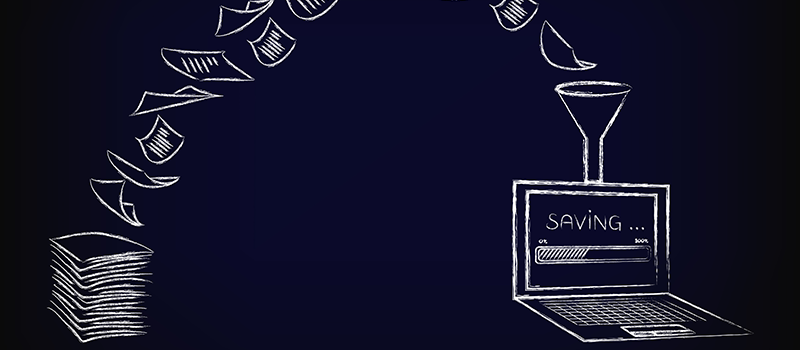4 Distinct Types of Document Capture to Fit Your Business Needs

Even after investing in a digital solution and using it to save time and boost efficiency, paper will ultimately find its way into your business. Whether it’s an invoice mailed from a vendor or old archived documents that have yet to be indexed, this straggling parchment makes document capture an imperative part of any digital transformation effort.
But how much paper does your business actually see? And what processes will it be used in? This will ultimately determine what level of document capture your business will need. Below is an excerpt from our expert OCR guide highlighting 4 distinct types of document capture, including a highly accurate AI-assisted method, each suited for different business needs. Interested in learning more? Download Your Guide to Mastering OCR.
Good, Better, Best: Choosing The Capture Type That Works for You
Much like an artist selecting the right paintbrush for the job, so too must you select the document capture type that fits your unique needs. Different types of advanced document capture are designed for different workloads and circumstances. The correct capture type for your business depends heavily on the expected page volume and the layout consistency of the documents being captured.
1. Good: KeyFree Indexing
With KeyFree Indexing, employees can quickly index documents using a simple click and highlight method. This OCR tool speeds up indexing quite a bit but requires human input to populate each individual field. This type of capture also cannot send information to other business applications.
These distinct pros and cons make KeyFree Indexing a good option for indexing loads of 50 or fewer documents per day, but to meet other business challenges, a more comprehensive capture option may be needed.
2. Better: Templated Capture
Templated document capture can be a highly effective solution when capturing document loads of more than 50 pages, especially when those documents use a set layout.
Since layouts are less likely to change with internal documents where your company controls the formatting or with documents from long-time vendors, templated capture is beneficial for internal processes or processes with set business partners.
Templated capture allows users to map set areas on a document to be captured and indexed, so in the future, information on documents with the same layout will be automatically lifted. If the system does not recognize the layout of a document, the system will request an employee to map it for future use. And unlike KeyFree Indexing, Templated Capture can send data to other business applications, helping your business make more informed decisions.
3. Best: Unstructured Capture
Unstructured document capture can lift large loads of 50 or more documents a day without needing to map layouts.
This makes unstructured capture highly effective in situations involving high vendor turnover or where document formats constantly change. Unstructured Capture can also send data to other business applications for use in other processes.
4. Better Than Best: Unstructured With AI
Industry-specific solutions may even use artificial intelligence in unstructured capture to learn from previous errors and improve accuracy. The most common solutions of this type are used for vendor invoices, receipts, and accounts payable automation.
How We Can Help!
Square 9 is an award-winning provider of digital solutions that take the paper out of paperwork. With innovative approaches to document capture, enterprise content management, web forms, and workflow automation, we provide next-level service and support to ensure you get the most out of your solution. To find out more about optical character recognition and other solutions that we offer, contact us.

